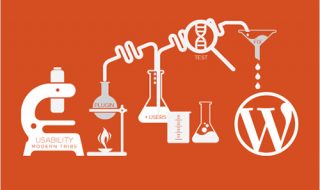
Implementing changes within an organization can present a range of challenges, and operations of all sizes often encounter issues anticipating problems and putting plans into action. It’s normal for a firm to move off a project even regular circumstances, but this sort of change can significantly impact everything from efficiency to customer satisfaction. Keeping track of changes and seeing that they’ll be applied in a structured way can demand a lot of attention to numerous details.
One approach to handling these sorts of situations to use change management software. Companies often find a host of concerns during the process of change, from assigning staff to new projects to identifying what has to be done to bring older efforts through an orderly end-of-life process. By utilizing an Information Technology Infrastructure Library, a business can keep track of possible issues that often accompany change and see that potential disruptions will be minimized or eliminated.
Starting Change

Can Your Business Weather The Rise Of New Technology?
It’s one thing to talk about change in the abstract, but the change management process is intended to see that decisions are made, and concrete steps are taken. Even taking note of the fact that change might be required may prove to be a complex process. It’s important to be decisive about the process, and having a system in place can help.
Software built to monitor change typically includes some mechanism for entering requests for change. Ideally, this approach ensures that concerns will be communicated effectively both in top-down and bottom-up ways. Having an underlying software infrastructure in place allows actors within an organization to quickly submit proposals and monitor their progress toward approval.
Identifying Concerns

Knowing Your Company Inside Out Is The Key To Success
Once a request has been granted, a firm will likely want to set out clear objectives for change. For example, if a project has been completed, it’s important to see that all employees and contractors will be effectively re-assigned or released. This calls for identifying all stakeholders involved and verifying that their abilities will be useful for ongoing efforts.
Poorly handled change can do serious damage to a firm. If an existing project is being discontinued, questions about bringing it to an end in an elegant manner may come up. Disrupting any system that customers depend on can be especially difficult. For example, a business that has deployed an API that retains even a small base can encounter satisfaction issues by ending its availability. It’s critical to note these risks in advance of making changes and to see that customer concerns will be addressed in a satisfactory manner.
Entry of these details into a database may have many benefits. Transitional concerns will be clearly identified. Resources will be allocated more efficiently. In this way, a software solution allows all stakeholders to have higher faith that the transition process won’t be unduly disruptive.
Setting Goals

The Tech That’s Driving Change In The Hospitality Industry
Itemizing goals once a change has been approved is critical. Keeping tabs on designated goals in a database allows all involved to see how things are progressing. If efforts are falling behind, concerns can be expressed. Software also allows stakeholders to point to where work could be handled more competently.
The input of clear goals into a system also permits an operator to avoid inefficiencies. If different departments are duplicating efforts as part of the process, the odds will be higher that someone will spot such a misallocation of time and resources. Since these types of problems should be readily identifiable early on, a company can save itself a lot of difficulties.
Implementation

The Future’s Here and Your Business Needs to Embrace It
The process of implementing change is typically simpler when everyone involved has access to management software. If two or three goals have to be achieved before an additional one can be pursued, the system allows individuals assigned to the additional stage of the process to monitor progress elsewhere. Should the implementation of a Stage One goal lag, folks who have to allocate resources at Stage Two and Three will know to delay their efforts until critical first stage goals are hit.
This approach incentives stakeholders. People responsible for changes know they’re being monitored. More importantly, they know they can use the system to ensure their concerns will be heard.
Review

The Best Project Management Software to Get Your Life and Business on Track in 2015
Change is an ongoing process, and it’s important to review every shift in a structured fashion. Foremost, a review should be performed to verify that all outlined goals have been achieved. Secondly, the review process should lean heavily on the data gathered to determine how accurate early estimates and impressions related to the process were. This type of analysis will inform future choices that a company makes, allowing it to be more efficient and effective in future efforts.
Conclusion

Times Are Changing. Is Your Business?
The utilization of software in managing change may make a major difference. It can improve communication of issues and allow actors to confirm that goals are being met. With an investment in infrastructure, improvements in the efficiency of handling change can be realized.




